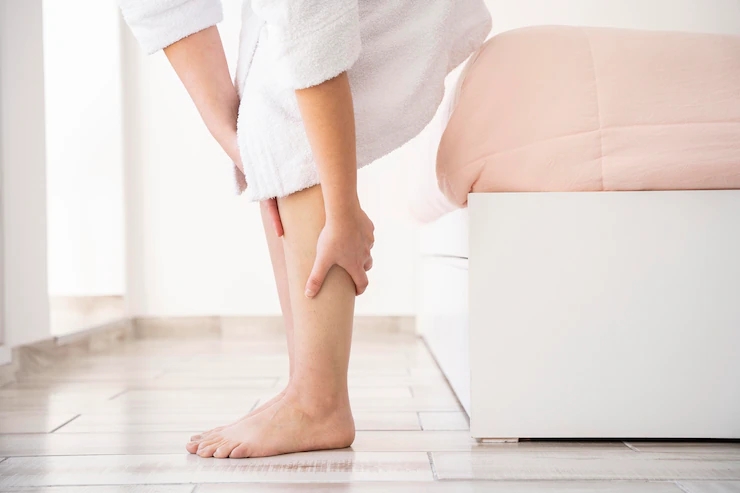
What is Varicose veins ?
Varicose veins is a disease that occurs when weak or damaged veins (close to the skins surface) get swollen or twisted. In simple words, the body’s veins have one-way valves that help blood flow towards the heart. But when these valves weaken, blood pools up in the veins causing the veins to swell. This is when you suffer from varicose veins. It usually affects the veins in the legs since activities like standing and walking increase the pressure in those veins. Varicose veins makes the legs look unappealing because the veins change colour and become dark purple or blue and start bulging, and this can be seen on the skins surface. They usually appear on the front and back of the calves and the thighs. At times it even causes pain in the feet and lower body which worsens due to continous standing or sitting. Other symptoms of the disease are muscle cramps and swelling in the lower legs and drying of skin and itching near the affected vein/s. Varicose veins should not be taken lightly and you should seek medical advice soon. In extreme cases it can cause painful ulcers on the skin, blood clots and bleeding due to bursting of those veins. It can even be a sign of an underlying medical condition called deep vein thrombosis.
Spider veins which is a milder version of Varicose veins occur on the legs and the face as well. They are red or blue in colour and look like a spiders web.
Some people suffer from the disease for no obvious reason. But usually there are some common factors that cause varicose veins. Lets know about them:
Family history: If someone in your family specially a close family member has suffered from varicose veins then your risk of developing the disease is higher.
Ageing: As you age, the valves in the veins weaken which can cause varicose veins.
Gender: Women are at a higher risk since hormonal changes during pregnancy, menopause and certain (hormonal) medicines can cause the disease.
In the case of women, pregnancy also adds weight on their lower body and consquently puts more pressure on their veins which damages them. Therefore pregnancy can also lead to varicose veins.
Weight: Again, if someone is overweight or obese it puts more pressure on his veins.
Lifestyle: Those who need to stand or sit contionously for long periods of time for example people who work in offices can also get affected because standing or sitting for long decreases blood circulation.
What measures can you take to avoid the disease?
Regular exercise and walking encourages blood flow in the legs. Also raising your legs above the level of your heart a few times a day can improve blood circulation. This can be done by lying down and placing a few pillows below your feet.
Losing excess weight or keeping your weight in control is an important factor to avoid the illness.
Avoid (or limit) wearing footwear with high heels. Wearing high heels raises your foots heel above the ground which prevents your calf muscles from pumping blood effectively up your leg. So to be on the safer side, you can flaunt those stilletos once in a while or then limit the size of the heels if you have a history of the disease running in your family. But if you notice early signs of varicose veins then wearing heels should be completely avoided .
Avoid wearing tight clothes more so .around your legs, waist and groin. Tight clothing can reduce blood flow
Eat a healthy well- balanced diet that is high in fiber and low in salt to avoid swelling (on feet) due to water retention.
Image by Freepik